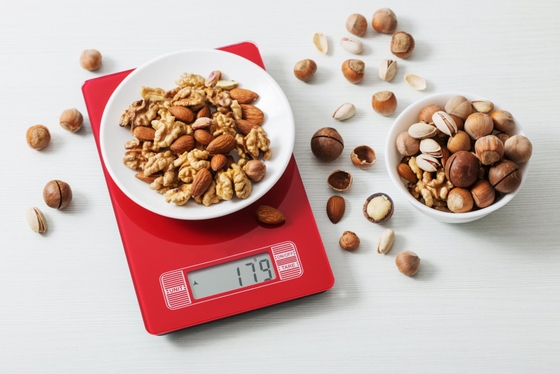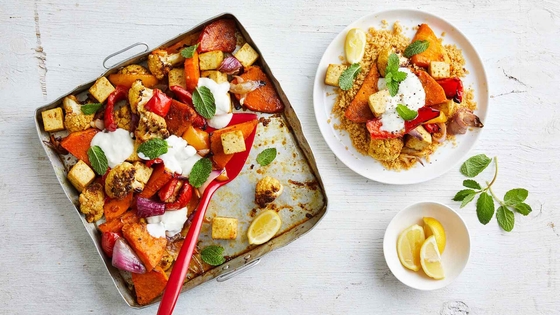
How can I eat more fruit and vegetables for a healthy heart?
Blog: 15 March 2021
Fresh fruit and vegetables are some of the best foods to eat for better heart health. However, figures from the Australian Institute of Health and Welfare show most people don’t eat anywhere near enough of these foods:
- Vegetables, legumes and beans
- 94.8% of women aged over 19 don’t eat enough
- 96.5% of men aged over 19 don’t eat enough
- Fruit
- 77% of women aged over 19 don’t eat enough
- 70.7% of men aged over 19 don’t eat enough
Eating fruit and vegetables is vital as they contain ingredients that we know help to prevent heart disease:
- Vitamins and minerals (micronutrients that perform essential roles in your body)
- Fibre (part of plant foods that can’t be broken down by digestion. However, it is needed in our diet to keep our digestive system healthy)
- Antioxidants (substances in food that can limit the damage to cells in your body)
Foods packed with fibre are great for your heart; they can lower the amount of cholesterol in your blood.
What is cholesterol?
Cholesterol is a waxy, fat-like substance that your body uses to build cells. There are two types:
Low-density lipoprotein (LDL) is ‘bad’ cholesterol
High-density lipoprotein (HDL) is ‘good’ cholesterol.
How does bad cholesterol impact your heart health?:
LDL cholesterol can stick to the walls of your arteries and cause a fatty build-up called plaque
too much plaque on the walls of your arteries can lead to blockages that stop blood from flowing properly to your heart
when there is a blockage in your coronary artery, which supplies blood to your heart, this causes a heart attack. When the blood supply to your heart is interrupted, your heart muscle can die.
Heart attacks can kill: figures from the Australian Bureau Of Statistics show that 19 Australians die from a heart attack every day.
Protect your heart by eating more fruits and vegetables.
A high intake of fruit and vegetables has been found to reduce the risk of heart disease. Fruits like avocados and olives contain healthy fats and oils, as well as nuts and seeds; eating these can lower your cholesterol and reduce your risk of developing heart disease.
Foods that are high in healthy fats include:
- Avocados
- Olives
- Nuts and seeds
- Healthy oils for cooking: olive, canola, sunflower, peanut and soybean oil
How can I eat more fruit and vegetables for a healthy heart?
Here are some ideas to help you to get munching and crunching on the good stuff:
Eat fresh or frozen fruit and vegetables. We’ve all heard the term “Fresh is best”. But it’s OK to save time by eating frozen or canned fruits and vegetables. Frozen options still count when it comes to eating healthy: just check the nutrition information panel on the food label. Avoid eating canned fruit and vegetables with added sugar or salt. Discover tips on reading food labels here.
Make a vegetable rainbow the star of your main meal. It’s easy to add an extra serve of your favourite vegetables to lunch or dinner. Alternatively, swap some of the meat in your meal with healthy beans, peas or lentils. Go for at least three different colours, and eat the goodness of a rainbow of fresh produce.
Up size the veggies. Add extra fresh or frozen vegetables to pasta dishes, soups or casseroles. If you’re cooking a sauce for pasta or meat, add grated vegetables, such as carrot or zucchini.
Chop! Chop! Save time preparing your meals and get your fruit and vegetables to go: get chopping the night before or in the morning. Pre-cut vegetables make healthy snacks that are easy to carry in lunchboxes and always on hand for when you're craving something fresh, healthy, crunchy and colourful. Always store cut fruit and vegetables in an air-tight container in the fridge; that way, there's always something healthy ready and waiting for when you get hungry between meals.
Add some salad to your wholegrain sandwich. Keep up the colour and crunch by adding carrot, tomato, lettuce and cucumber to your sandwich. If you love a toastie, add finely chopped onion, mushrooms or spices for extra flavour.
Wear your heart on your sides. When you eat out, you can choose to eat healthily. Order menu items brimming with vegetables, including vegetable-based pasta sauce (ratatouille, vegan bolognese, spinach and ricotta), salads, stir-frys and more.
Get excited for fruits with breakfast. Add chopped or frozen fruit to your wholegrain cereal or porridge; this boosts the delicious flavour of your first meal of the day, it adds colour, and, most importantly, you will help your heart to flourish.
Order a side salad or a fruity dessert. When you order fish or meat for your main course, add a side of vegetables. Choose a fresh garden salad, a Mediterranean-style salad, or roasted vegetables, like pumpkin or capsicum. Go for a fresh fruit salad as a dessert when you are enjoying dinner in a restaurant.
Remember to make it fun!
One of our favourite tips above is to “eat the rainbow”; it's one way you can add some fun to eating well for your heart.
The Heart Foundation has collected hundreds of recipes: on our website, you will find heart-healthy meals across many categories, including Kids, Dinner, Salad, Vegetarian, Snacks, Chicken and more.
You might also be interested in...
Last updated27 February 2024


